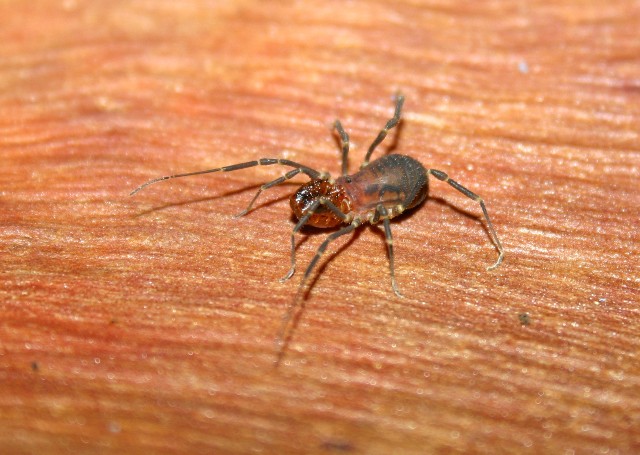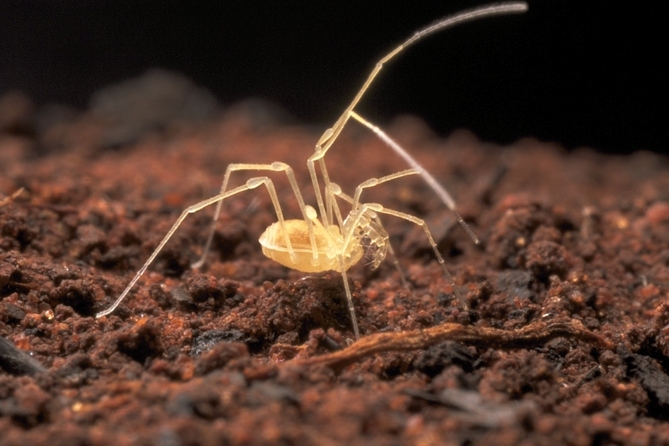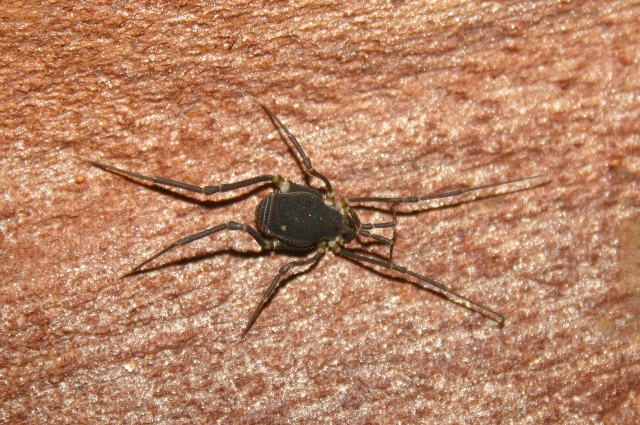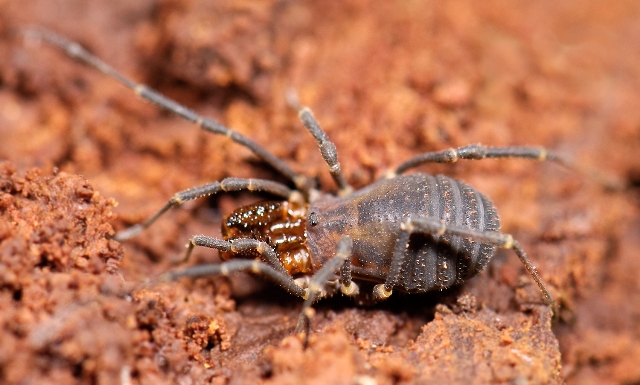Phylum Arthropoda
Subphylum Chelicerata
Class Arachnida
Order Opiliones
Common names: harvestmen, daddy longlegs
Overview
Opiliones are small to moderate-sized arachnids, with a body rarely exceeding 15 mm in length. As the name �daddy longlegs� implies, many species have elongate legs. At first glance, Opiliones resemble spiders, however there are many differences. Opiliones do not have a median constriction of the body; they lack fang-like chelicerae, and do not produce silk. The terminal portions of the legs are often also subdivided into many small segments and there are usually two eyes placed either side of a tubercle situated medially on the cephalothorax. The abdomen joins the cephalothorax very broadly, giving the body an elliptical or rounded appearance. The cephalothorax often appears disproportionately large, giving the appearance of a head stuck on legs. Some harvestmen defend themselves with chemical deterrents that are expelled through repugnatory glands of which there are usually two.
Distribution and diversity
Opiliones have a continent-wide distribution in Australia but are absent or rare in desert environments. Globally, there are approximately 6,000 harvestmen species, with Australia having 194 described species from 72 genera accommodated in 12 families. However, this is only a small fraction of the true size of the fauna which is estimated at about 1,200 species.
Life cycle
The sexes are sometimes quite dimorphic and males frequently have ornamented or enlarged pedipalps and/or chelicerae. Harvestmen are unusual among arachnids in having direct copulation, and males possess an elongated penis. Females usually possess a similarly elongated ovipositor, with which the eggs are laid in soil or other hidden locations. Juveniles moult several times before maturity.
Feeding
Most harvestmen are predatory on smaller invertebrates. Prey is captured with modified, sometimes raptorial, pedipalps or chelicerae. Harvestmen do not use venom or silk to capture and subdue their prey. Some harvestmen species are unusual in that they feed on vegetation while others are known to feed of the carcasses of dead animals.
Ecology
Opiliones are often important components of the leaf-litter invertebrate community and may also be encountered under logs, rocks and under the bark of trees. They mostly inhabit moist microhabitats however a few species have been recorded in arid Australia. They are often quite common, however their impact as predators is unknown. Despite their resemblance to spiders, harvestmen are completely harmless as they lack venom glands, and they are not commercially important.

Nunciella sp. from Western Australia
Image credit: Photographer: Mark Harvey
� Western Australian Museum

Opiliones, blind subterranean species from Western Australia
Image credit: Photographer: Erich S. Volschenk
� Western Australian Museum

Assamiidae from the Kimberley, Western Australia
Image credit: Photographer: Mark Harvey
� Western Australian Museum










